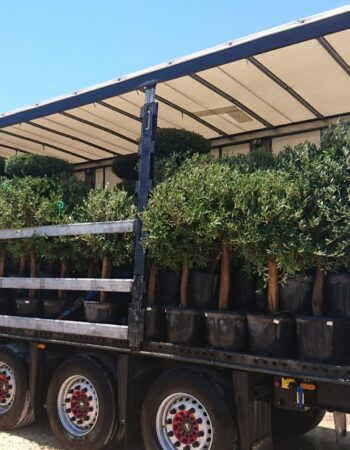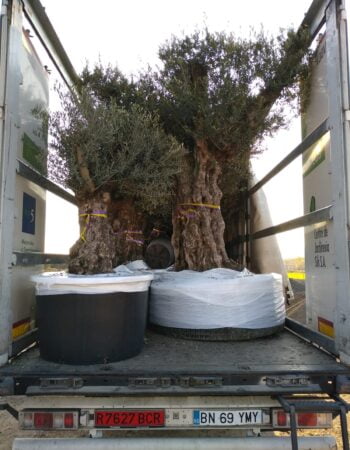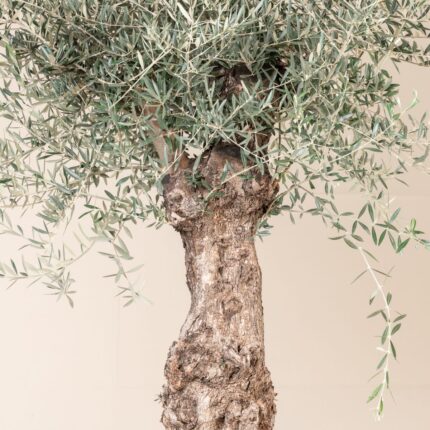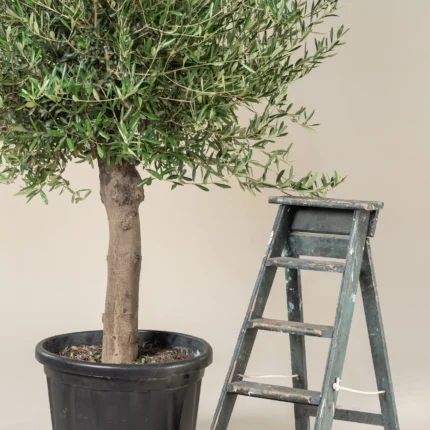Pinus Pinea o Pino Piñonero
Pinus pinea, commonly known as the Stone Pine or Pine Nut Tree (Pino Piñonero), is a distinctive and valuable pine tree native to the Mediterranean region. It is well-regarded for its unique, umbrella-like canopy and its edible pine nuts. The tree features a tall, straight trunk and a broad, rounded crown of long, needle-like leaves. Stone Pines produce large, woody cones that contain the edible pine nuts, which are prized for their culinary uses. The tree is also valued for its ornamental qualities and adaptability in a variety of landscape settings.
- Botanical Name: Pinus pinea
- Common Name: Stone Pine, Pine Nut Tree, Pino Piñonero
- Mature Height: 40-60 feet (12-18 meters)
- Mature Spread: 30-40 feet (9-12 meters)
- Growth Rate: Slow to moderate
- Light Requirements: Full sun
- Soil Requirements: Well-draining soil; prefers sandy or loamy soils but tolerates a range of soil types
- Water Needs: Low to moderate; drought-tolerant once established
- Foliage: Evergreen, with long, needle-like leaves in bundles of two
- Cones: Large, woody cones that contain edible pine nuts
Uses:
- Nut Production: Produces edible pine nuts (pignoli) that are used in cooking, baking, and various culinary dishes.
- Ornamental Landscaping: Adds a distinctive and attractive element to gardens and landscapes with its unique canopy and form.
- Shade Tree: Provides shade with its broad canopy, making it suitable for parks, gardens, and public spaces.
- Wood Production: The wood can be used for timber and various woodworking applications.
Benefits:
- Aesthetic Appeal: Features a unique, umbrella-like canopy and a tall, elegant trunk that enhances garden aesthetics.
- Edible Nuts: Provides pine nuts that are rich in flavor and nutrients, valued for their culinary uses.
- Shade Provider: Offers shade with its broad, dense canopy, making it ideal for outdoor spaces.
- Drought Tolerance: Adaptable to a range of soil types and conditions, with moderate water needs once established.
Pinus pinea (Stone Pine or Pino Piñonero) is a valuable and versatile tree that adds both ornamental and practical value to gardens and landscapes with its distinctive form and edible pine nuts. Its adaptability, aesthetic qualities, and low maintenance needs make it a prized addition to a variety of outdoor settings.
Debes acceder para publicar una valoración.


CAREFUL TREE TRANSPORTATION
At Treezom, we take great care in transporting your trees to ensure they arrive in perfect condition. Our expert team uses various methods, depending on the size and volume of the order, to provide safe and efficient delivery. Whether you're ordering a single tree or a bulk order, we guarantee high standards of handling and care throughout the process.
MULTIPLE SHIPPING METHODS
- Truck Delivery: Ideal for local or regional deliveries, ensuring a smooth and timely shipment of your trees directly to your location.
- Sea Containers (20’ or 40’): Perfect for larger orders or international shipping. Our sea containers are equipped to handle bulk shipments with optimal protection.
- Other Customized Solutions: Depending on the size and nature of your order, we can offer tailored shipping methods to meet your specific needs.
No matter the shipping method, we use specialized packaging and handling procedures to protect the trees during transit, ensuring they arrive healthy and ready for planting.
Below, you’ll find key tips tailored to this species’ requirements. Whether you’re new to plant care or have plenty of experience, these guidelines are here to support you in keeping your green companion healthy and vibrant.
- Planting:
- Choose a location with full sun and well-draining soil.
- Dig a hole twice the width of the root ball and equal in depth.
- Place the tree in the hole, backfill with soil, and water thoroughly.
- Ensure adequate spacing from other plants and structures to accommodate its mature size and spread.
- Watering:
- Water regularly during the establishment period to support healthy root development.
- Once established, the Stone Pine requires low to moderate watering; allow the soil to dry out between waterings.
- The tree is drought-tolerant but may benefit from supplemental watering during extended dry periods.
- Pruning:
- Prune to remove dead or damaged branches and to maintain shape if needed.
- Light pruning helps to maintain a neat appearance and improve air circulation within the canopy.
- Avoid heavy pruning, as this can affect the tree's natural form and growth.
- Fertilizing:
- Feed with a balanced, slow-release fertilizer in early spring to support healthy growth.
- Use fertilizers formulated for trees to provide essential nutrients and prevent deficiencies.
- Avoid over-fertilizing, as excessive nutrients can lead to excessive foliage growth and reduced nut production.
- Pest and Disease Control:
- Pinus pinea is generally pest-resistant but can occasionally suffer from pests such as pine beetles or aphids; treat with appropriate insecticides if necessary.
- Monitor for diseases such as needle blight or root rot; ensure good air circulation and avoid waterlogged soil.
- Regularly inspect the tree for signs of pests or disease and address issues promptly.
*This information is provided for informational purposes only. For more detailed care, please consult a professional Gardener or Arborist.


 SINGLE TREE
SINGLE TREE OUTDOOR POTS
OUTDOOR POTS
















 Single Tree
Single Tree
Valoraciones
No hay valoraciones aún.